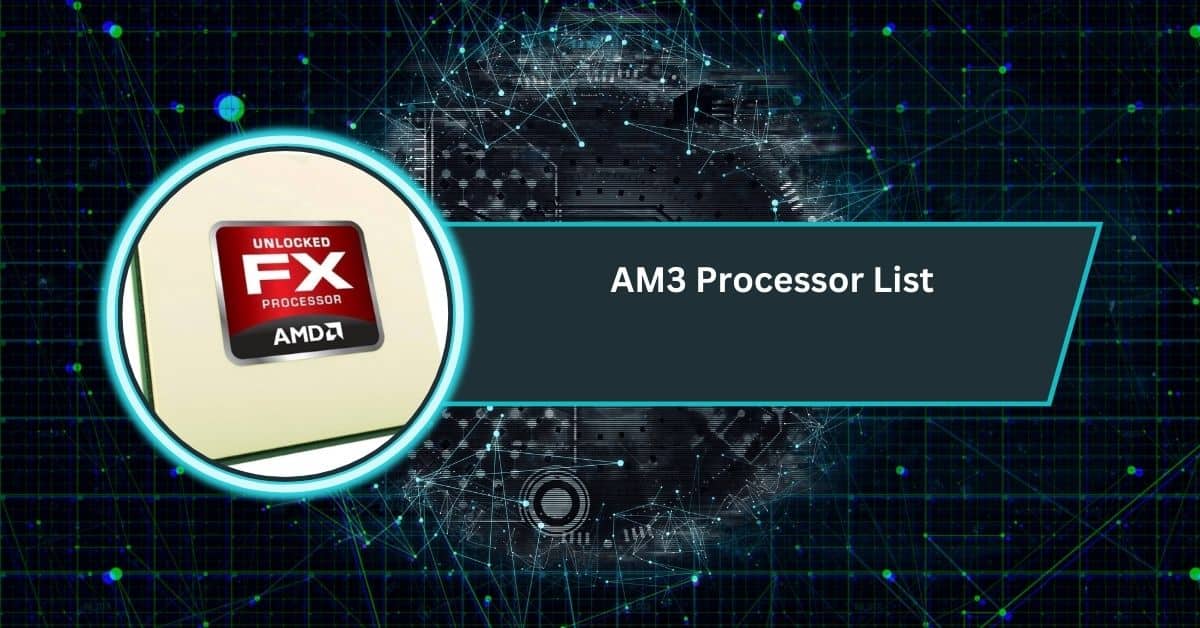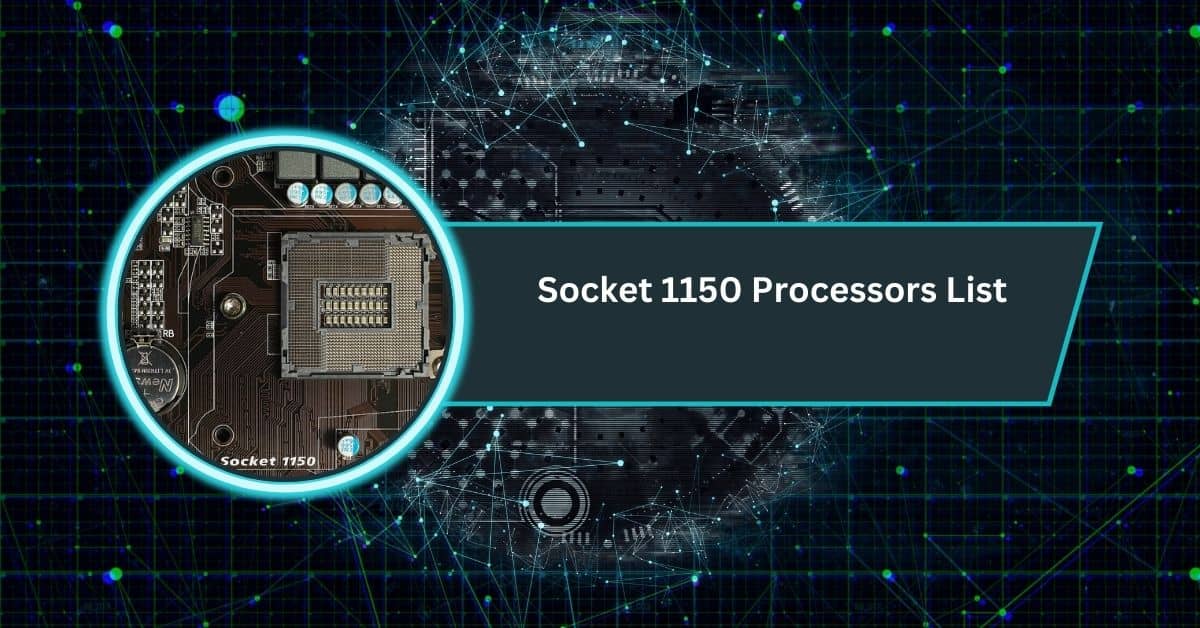The LGA 1151 socket, also known as Socket H4, is a widely recognized CPU socket introduced by Intel in 2015. It has been a cornerstone for several generations of Intel processors, supporting a range of architectures and offering compatibility for various desktop and workstation builds.
The LGA 1151 socket supports Intel Skylake (6th gen), Kaby Lake (7th gen), and Coffee Lake (8th, 9th gen) processors, including Core i3, i5, i7, Pentium, Celeron, and Xeon E3-1275 v5, paired with B150, H110, H170, Q150, Q170, and Z170 chipsets.
This article explores the Intel processors compatible with the LGA 1151 socket, delving into its two revisions, supported architectures, and key considerations for compatibility.
Introduction to the LGA 1151 Socket
Introduced in August 2015 alongside the Skylake architecture, the LGA 1151 socket was designed to replace the earlier LGA 1150 (Socket H3). The “LGA” stands for Land Grid Array, a type of socket where the pins are on the motherboard rather than the processor, a design Intel has favored for its durability and improved contact reliability. The “1151” refers to the 1151 contact points that connect the processor to the motherboard, facilitating power delivery, data transfer, and communication.
The LGA 1151 socket comes in two distinct revisions:
- First Revision: Supports Skylake (6th generation) and Kaby Lake (7th generation) processors, paired with 100- and 200-series chipsets.
- Second Revision: Exclusively supports Coffee Lake (8th and 9th generation) processors, paired with 300-series chipsets.
These revisions are not cross-compatible due to differences in pin assignments and electrical requirements, a critical point for builders and upgraders to note.
Intel Processor Generations Using LGA 1151
The LGA 1151 socket supports multiple Intel processor families across several generations, each with distinct architectures and performance characteristics. Below, we explore the primary processor families compatible with this socket.
1. Skylake (6th Generation)
Launched in 2015, Skylake was the first architecture to use the LGA 1151 socket. It marked a significant leap forward with support for DDR4 memory, improved power efficiency, and enhanced performance over its predecessor, Haswell (LGA 1150). Skylake processors are compatible with the first revision of LGA 1151 and work with 100-series chipsets (e.g., H110, B150, H170, Q150, Q170, Z170).
Key Skylake processors include:
- Intel Core i3-6100: A dual-core, 3.7 GHz processor with 4 threads, ideal for budget builds and basic tasks.
- Intel Core i5-6500: A quad-core, 3.2 GHz (3.6 GHz turbo) processor without hyper-threading, suited for mid-range gaming and productivity.
- Intel Core i7-6700K: A quad-core, 4.0 GHz (4.2 GHz turbo) processor with 8 threads, unlocked for overclocking, popular among enthusiasts.
- Intel Pentium G4400: A dual-core, 3.3 GHz budget option with basic integrated graphics (HD Graphics 510).
- Intel Celeron G3900: A dual-core, 2.8 GHz entry-level processor for low-cost systems.
Skylake also introduced support for Direct Media Interface (DMI) 3.0 and PCI-Express 3.0, enhancing connectivity and bandwidth.
2. Kaby Lake (7th Generation)
Released in 2016, Kaby Lake was a refinement of Skylake, built on a 14nm process with improved clock speeds and efficiency. It uses the first revision of the LGA 1151 socket and is compatible with both 100- and 200-series chipsets (e.g., B250, H270, Z270), though a BIOS update may be required for 100-series boards.
Notable Kaby Lake processors include:
- Intel Core i3-7100: A dual-core, 3.9 GHz processor with 4 threads, a solid budget option.
- Intel Core i5-7400: A quad-core, 3.0 GHz (3.5 GHz turbo) processor, great for everyday computing and light gaming.
- Intel Core i5-7600K: A quad-core, 3.8 GHz (4.2 GHz turbo) unlocked processor, favored for gaming and overclocking.
- Intel Core i7-7700K: A quad-core, 4.2 GHz (4.5 GHz turbo) processor with 8 threads, a high-performance option for enthusiasts.
- Intel Pentium G4560: A dual-core, 3.5 GHz processor with hyper-threading, offering excellent value for budget builds.
Kaby Lake added native support for Intel Optane Memory and improved integrated graphics (e.g., HD Graphics 630), making it a versatile choice.
3. Coffee Lake (8th and 9th Generation)
Coffee Lake, spanning the 8th and 9th generations, introduced a shift to the second revision of the LGA 1151 socket. Launched in 2017 (8th gen) and 2018 (9th gen), these processors required 300-series chipsets (e.g., H310, B360, H370, Q370, Z370, Z390) due to increased power and pin requirements for 6- and 8-core CPUs. The second revision reassigns some pins to add power and ground lines, breaking compatibility with Skylake and Kaby Lake.
8th Generation (Coffee Lake)
- Intel Core i3-8100: A quad-core, 3.6 GHz processor without turbo boost, a strong budget option.
- Intel Core i5-8400: A 6-core, 2.8 GHz (4.0 GHz turbo) processor, excellent for gaming and multitasking.
- Intel Core i7-8700K: A 6-core, 12-thread, 3.7 GHz (4.7 GHz turbo) unlocked processor, a favorite for high-end builds.
- Intel Core i7-8700: A 6-core, 12-thread, 3.2 GHz (4.6 GHz turbo) processor, great for productivity and gaming.
9th Generation (Coffee Lake Refresh)
- Intel Core i3-9100F: A quad-core, 3.6 GHz (4.2 GHz turbo) processor without integrated graphics, a budget gaming pick.
- Intel Core i5-9400F: A 6-core, 2.9 GHz (4.1 GHz turbo) processor without integrated graphics, popular for gaming.
- Intel Core i5-9600K: A 6-core, 3.7 GHz (4.6 GHz turbo) unlocked processor, ideal for overclocking and gaming.
- Intel Core i7-9700K: An 8-core, 8-thread, 3.6 GHz (4.9 GHz turbo) unlocked processor, excellent for high-end tasks.
- Intel Core i9-9900K: An 8-core, 16-thread, 3.6 GHz (5.0 GHz turbo) flagship processor, perfect for gaming, video editing, and heavy workloads.
Coffee Lake brought higher core counts, improved multi-threading, and support for faster DDR4 memory, catering to modern demands.
4. Other Processor Families
Beyond the Core series, the LGA 1151 socket supports additional Intel processor families:
- Pentium and Celeron: Budget-friendly options like the Pentium Gold G5420 (3.8 GHz, dual-core) and Celeron G4930 (3.2 GHz, dual-core) are compatible, offering basic performance for entry-level systems.
- Xeon E3 and E Series: Workstation and server processors, such as the Xeon E3-1200 v5 (Skylake) and E-2100 (Coffee Lake) series, work with LGA 1151, often paired with the C236 chipset for professional use.
Compatibility Considerations
While the LGA 1151 socket physically accommodates processors across these generations, compatibility isn’t universal. Here are key factors to consider:
- Socket Revision: The first revision (Skylake and Kaby Lake) works with 100- and 200-series chipsets, while the second revision (Coffee Lake) requires 300-series chipsets. Mixing generations across revisions will not work due to pin assignment changes and processor detection pin relocation.
- Chipset Compatibility: For example, a Z170 chipset supports Skylake and Kaby Lake (with a BIOS update), but a Z370 or Z390 chipset is needed for Coffee Lake. Always check the motherboard manufacturer’s CPU support list.
- BIOS Updates: Older motherboards may require a firmware update to recognize newer processors, especially for 7th gen on 100-series boards or 9th gen on early 300-series boards.
- Power Delivery: High-end CPUs like the i9-9900K demand robust voltage regulator modules (VRMs) on the motherboard for stability, especially when overclocking.
- Cooling: The LGA 1151 socket shares mounting holes with LGA 1150, 1155, and 1156, making heatsinks interchangeable across these sockets (75 mm square pattern).
Why LGA 1151 Matters
The LGA 1151 socket’s versatility made it a popular choice for a wide range of users, from budget builders to enthusiasts. It supported DDR4 memory (and DDR3L in some early boards), PCI-Express 3.0, and features like Intel Turbo Boost and Optane Memory. Despite being succeeded by LGA 1200 (10th and 11th gen) and LGA 1700 (12th to 14th gen), LGA 1151 remains relevant in 2025 for cost-effective upgrades or legacy systems, especially with processors like the i9-9900K still capable of handling 1080p gaming and multitasking.
Conclusion
The LGA 1151 socket hosts a diverse lineup of Intel processors, including Skylake (6th gen), Kaby Lake (7th gen), and Coffee Lake (8th and 9th gen) architectures across the Core i3, i5, i7, and i9 series, as well as Pentium, Celeron, and select Xeon processors. Each generation brought improvements in core counts, clock speeds, and features, catering to various needs. However, the two revisions of the socket demand careful attention to motherboard and chipset compatibility. Whether you’re building a budget PC or a high-end rig, understanding which Intel processors use the LGA 1151 socket ensures a successful and efficient system.
FAQs
What Other Intel Processors Use the Socket LGA 1151?
Hey! LGA 1151 works with Intel’s Skylake (6th gen), Kaby Lake (7th gen), and Coffee Lake (8th and 9th gen) CPUs, like Core i3, i5, i7, plus Pentium and Celeron!
Who Uses LGA 1151?
Gamers, students, and office folks love LGA 1151! It’s perfect for budget PCs, gaming rigs, or work systems using Intel’s 6th to 9th gen processors. Super versatile!
What Is the Best CPU for Socket 1511?
I think you meant LGA 1151! The Intel Core i9-9900K shines here—8 cores, 16 threads, and 5.0 GHz speed make it awesome for gaming and heavy tasks!
Is LGA 1151 Discontinued?
Not officially, but LGA 1151 is older now. Intel moved to LGA 1200 and 1700 for newer CPUs. Still, it’s great for upgrades or used builds in 2025!
Does i9 Fit in LGA 1151?
Yes! The Intel Core i9-9900K, a 9th gen beast, fits LGA 1151 perfectly. It needs a 300-series motherboard, though, for top performance. Great choice!
Can LGA 1151 Fit in LGA 1700?
Nope, sorry! LGA 1151 and LGA 1700 are different—1151 pins won’t match 1700’s design. You’ll need a new motherboard for LGA 1700 CPUs. No worries, though!











